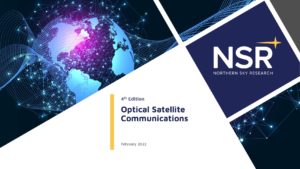The Bright Future of Optical Satcom
In the race to meet the soaring demand for high-volume, high-speed data transmission, satellite operators and connectivity service providers are on an uphill battle. Traditional radio frequency (RF) communications are starting to fall short, hindered by limited data downlink capacity and susceptibility to cyber threats. Enter optical satellite communications (OSCs), a compelling solution that bridges.



